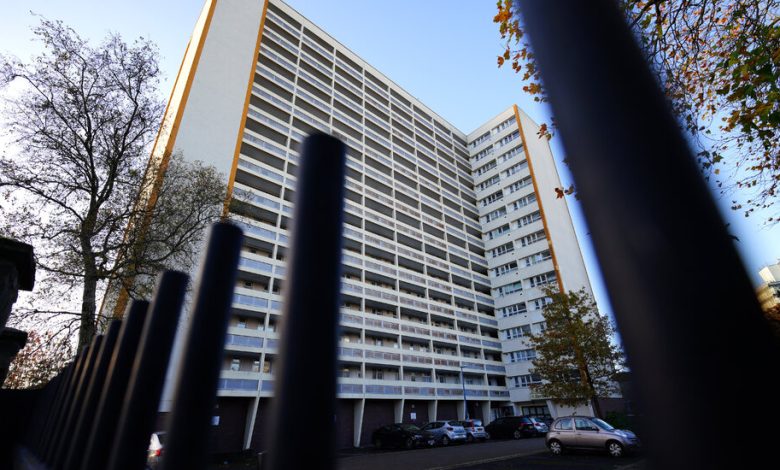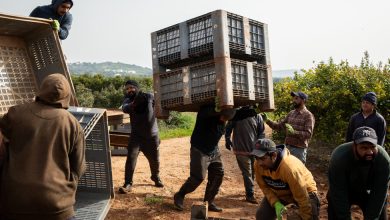‘Absolute Chaos’: Residents Evacuated From Public Housing Tower in England

Shaban Ali has lived in a public housing tower in Bristol, in southwest England, for seven years. On Tuesday, the plan was to stay in: dinner, a bath and watching “Paddington” with his two young children.
Instead, they and other residents of Barton House were ordered to pack a bag and immediately evacuate the building over concerns with the building’s structural integrity, the authorities said on Wednesday.
“It was absolute chaos,” said Mr. Ali, 36, the secretary of ACORN Bristol, a union that has campaigned for local tenants.
The abruptness of the evacuation order left hundreds of residents scrambling to find a place to sleep, he said. Some went to city hall, which the local council had designated as a temporarily shelter, according to a statement from Bristol’s mayor, Marvin Rees. And some stayed in the tower, worried about leaving their belongings.
Mr. Ali sent his children to their mother’s home. But unable to find a place to go himself, he ended up staying. “I was awake the whole night,” he said. “Our lives are all up in the air.”
The evacuation has drawn fresh attention to the construction of Britain’s public housing high-rises. Flammable cladding forbidden in many other countries contributed to the fast spread one of Britain’s deadliest residential fires, in London in 2017. The Grenfell Tower fire, which killed 72 people and left hundreds homeless, prompted a national reckoning over safety measures and construction of high-rise buildings. Critics have accused governments of prioritizing cost-cutting over safety, and housing advocates in London and elsewhere have since raised concerns about other buildings.
In Bristol, where a fire last year at a public housing tower killed one person and injured others, city officials said they had ordered the evacuation of Barton House as a “precautionary measure” after surveys of three of the block’s 98 apartments found the tower may not have been built to the specifications of its design. The block appeared to lack “structural ties” between floors and external walls, and structural elements had “lower fire resistance” and “less concrete cover” than originally planned, according to the mayor.
That meant there was “a material risk to the structure of the block in the event of a fire, explosion or large impact,” Mr. Rees said in a statement on Wednesday. While there was “no evidence of an immediate risk to life,” he said the decision was made to evacuate.
Barton House was built in 1958 and is among the oldest of the city’s public housing projects, or council housing estates, as they are called in Britain. There was no evidence yet to suggest the block’s issues appeared in other estates, the city said.
Housing researchers said that Barton House appeared to have been built using a type of construction known as a “large-panel system,” which was popular in postwar Britain but has since been deemed a possible safety concern. Another block partially collapsed in 1968 after a gas explosion, killing four people.
“These blocks are coming to the end of their safe life, and most of them are structurally unsound,” said Danielle Gregory, a project manager at Tower Blocks UK, a group that collects information about and campaigns for the safety of public housing towers. “The scale of the problem is enormous.”
Government officials in 2017 instructed local councils to survey the safety of these large-panel-system buildings, and Ms. Gregory said councils faced pressure to take action. But at least 575 large-panel-system blocks remain in Britain, according to the group’s research.
She said had never heard of such an urgent evacuation. The local emergency service, Avon Fire and Rescue, supported the move, saying on X, formerly Twitter, that it was an “appropriate and proportional” measure to keep residents safe.
Residents called the evacuation a frightening experience, saying that they received little warning from local officials and no clear idea of when the ordeal would end. Hotel rooms were given to some families in need, while others chose to stay with friends and family, Mr. Rees said.
Council workers were still trying to reach almost 30 households who had not answered their doors, he said.
On Wednesday afternoon, Mr. Ali was still trying to figure out where he would sleep that night.
“We just want someone to take charge,” he said, “and let us know this is what’s going to happen.”





